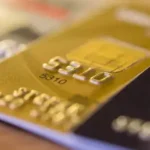Personal injury claims can be complex legal processes, and individuals seeking compensation often find themselves wondering about the timelines involved in reaching a settlement. The journey from filing a claim to receiving compensation can vary significantly based on numerous factors.
Understanding these variables is crucial for individuals navigating the legal landscape after an injury. In this article, we will dive into the intricate web of elements that influence the timelines of personal injury settlements.
Nature and Severity of Injuries
The extent and nature of injuries significantly influence the trajectory of personal injury settlements. Complex injuries that necessitate extensive medical treatment and rehabilitation often extend the settlement process. Insurance adjusters and legal teams must wait until the full scope of long-term effects becomes clear.
This involves gathering comprehensive medical records, consulting with specialists, and assessing the impact on the individual’s life. The more severe and enduring the injuries, the longer it may take to reach a settlement that adequately compensates the victim.
Liability and Fault Determination
Establishing liability is a fundamental aspect of personal injury cases. According to Forbes, there are four types of liability. These are negligence, vicarious liability, strict liability, and intentional wrongdoing.
If there’s ambiguity or dispute over fault, the process can be prolonged. Investigations into the incident, collection of evidence, and negotiations are intricately tied to determining liability.
In cases where the fault is contested, both parties may engage in extensive fact-finding, depositions, and expert opinions, all of which contribute to delays. A clear determination of liability is essential before moving forward with negotiations, settlements, or potential legal proceedings.
Also Read P: Parental Perspectives: Voices from Tylenol Autism Lawsuits
Local Laws: Navigating Jurisdictional Nuances
Local laws and jurisdictional differences introduce a layer of complexity to personal injury settlements. Each jurisdiction has its own set of rules, including statutes of limitations, procedural requirements, and even damage caps. Being well-versed in these local laws is crucial for both plaintiffs and defendants.
Failure to adhere to jurisdiction-specific legal procedures can lead to setbacks or even the dismissal of a case. Attorneys must navigate these specifics, ensuring all legal requirements are met within the designated timeframe, contributing to the overall timeline of the settlement process.
Arkansas serves as an example of how regional legal frameworks shape the resolution process. In the Natural State, the comparative fault system takes precedence, allowing for an evaluation of proportional fault. Operating under a modified comparative negligence rule, parties can seek damages even when partially at fault, provided their responsibility does not exceed 50%.
This legal landscape significantly influences negotiation dynamics. Arkansas imposes a three-year statute of limitations for personal injury claims, emphasizing the temporal constraints that parties must navigate. Keith Law Group notes that Rogers is one of the key cities in Arkansas where personal injury cases are frequently reported. Car crash lawsuits are the most common type of personal injury claims.
According to the IIHS, the city was home to about 3,028,122 people and the state reported 631 fatal crashes in 2021. Most, if not all of these incidents end up in personal injury cases being filed. A Rogers personal injury attorney can prove to be an invaluable ally in such cases, helping you navigate the local legal landscape.
Insurance Company Cooperation
The responsiveness and cooperation of insurance companies significantly impact the pace of a personal injury settlement. Delays may occur if insurers are unresponsive to communication, request extensive documentation, or dispute the validity of the claim. For those navigating through the complexities of insurance, resources like www.Medicareadvantageplans2024.org can provide valuable information and assistance, especially when dealing with health insurance aspects of a claim.
Adjusters play a key role in evaluating claims and proposing settlements. If there’s resistance or reluctance from the insurance company, negotiations can stall. Insured individuals may face frustration and prolonged uncertainty as they await responses and counteroffers, adding to the overall duration of the settlement process.
Legal Representation and Expertise
The choice of legal representation is a critical factor in determining the efficiency of the settlement process. Competent and experienced attorneys can navigate legal complexities with precision, streamlining the process. They are adept at gathering evidence, negotiating with insurance companies, and presenting a compelling case.
In contrast, inexperienced or overwhelmed legal teams may inadvertently contribute to delays. Effective legal representation not only expedites the resolution but also ensures that the injured party’s rights are protected throughout the entire process.
Pretrial Procedures and Court Backlog
Efficiency and backlog within the court system play a significant role in determining settlement timelines. Pretrial procedures, including discovery (the exchange of information between parties) and motions, can extend the duration of the case. Courts with crowded dockets may face scheduling challenges, leading to delays in hearings and trial dates.
Additionally, the complexity of the case and the need for thorough legal proceedings may contribute to a lengthier pretrial phase. Understanding the local court dynamics is crucial for anticipating potential delays in the settlement process.
Negotiation Dynamics and Communication
Effective communication and negotiation skills are critical for speeding up the settlement process. Parties willing to engage in meaningful discussions and find common ground can expedite resolution. Conversely, disputes, lack of communication, or unrealistic expectations can lead to prolonged negotiations.
Mediation or alternative dispute resolution methods may be employed to break impasses. Also called ADR, alternative dispute resolution refers to any technique of settling disputes that does not include the use of the legal system. According to the Legal Information Institute, the most common ADR processes are mediation, conciliation, arbitration, negotiation, and transaction.
Attorneys and parties involved must maintain open lines of communication to address concerns, discuss settlement offers, and work collaboratively toward a fair resolution.
Economic Factors and Policy Limits
The financial aspects of a personal injury case, including insurance policy limits and economic conditions, can significantly influence settlement timelines. Insufficient insurance coverage or financial constraints on the part of the liable party may necessitate more extended negotiations or alternative resolution methods.
Economic conditions, including inflation and changing healthcare costs, can also impact the valuation of the claim. Understanding the economic landscape surrounding the case is crucial for both parties in assessing the feasibility and timing of reaching a fair settlement.
In summary, the intricate web of factors affecting personal injury settlement timelines underscores the need for an understanding of legal, procedural, and economic elements. The nature of injuries, liability determination, jurisdictional nuances, and the responsiveness of insurance companies all play critical roles.
Legal representation, court efficiency, and economic conditions further contribute to the complexity. Navigating this landscape requires strategic communication and negotiation, particularly in the face of potential disputes and economic constraints.
As individuals seek just compensation, recognizing these diverse influences empowers them to navigate the process with informed expectations. This ultimately contributes to a more efficient and fair resolution of personal injury claims.






